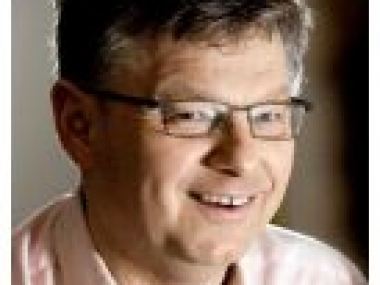Interview with Claes Nilas, Chair of the URBACT Monitoring Committee
Edited on
09 October 2017In early 2012, Copenhagen-born Claes Nilas took over as Chair of URBACT's Monitoring Committee, a post he will hold until the end of the year. Mr Nilas is Permanent Secretary of State and Deputy Minister at the newly established Danish Ministry of Housing, Urban and Rural affairs. Here he tells us why "the URBACT programme is all about added value", and presents urban challenges from a Danish perspective.

What does the URBACT programme mean to you? To me URBACT means pragmatic solutions to concrete urban challenges, and the possibility to draw on ideas and best practice from a large network of cities facing similar challenges.
What is URBACT's added value for Denmark, your country?
The URBACT programme is all about added value. From forming Local Support Groups that endure even after the project has ended, to producing tangible and pragmatic Local Actions Plans for the participating cities. The Local Action Plan also facilitates the exchange of experience and learning. Thus, in Denmark cities are able to draw on both actual Danish experiences, as well as valuable experiences from abroad.
You recently joined the Danish Ministry for Urban, Housing and Rural Development, the latest in an impressive range of high-level positions at the Ministries for Integration, Family and Consumer Affairs, Justice, and the Interior, as well as with the Greater Copenhagen Authority (HUR). How can these experiences enrich your involvement with URBACT as Chair of the Monitoring Committee?
In my previous positions I also had a strong focus on urban development, particularly urban development in deprived neighbourhoods. Tackling these issues was an invaluable experience that I draw upon in my new position. In past decades, the economic situation in Denmark and of the Danish government was very good. This made it easier to tackle the challenges of urban development. Due to the financial crisis, we are now facing a situation that is completely different. In this new situation we have to become even better in forming networks and working together across sectors and borders to find sustainable and possibly cheap solutions to the many challenges of urban development.
As you know, URBACT allows European cities to work together to find concrete solutions to urban challenges. Which of these urban challenges occupy your attention in particular today?
At the moment, three areas of challenges figure highly in our work on urban issues. They are: deprived neighbourhoods; shrinking, provincial cities in rural areas; and last but not least, sustainable and green urban development.
You are responsible for both urban and rural development. For you, what are the main issues in the relation between cities and their surrounding rural areas?
I think some of the main urban-rural problems are those related to urban sprawl. There's also the question of creating strong links between the economic development of urban areas and the economic development of the surrounding rural regions.
And to conclude, what would your ideal city look like?
Various scholars ask if there is something like a "European city", i.e. characteristics that European cities share. European cities of course differ quite a lot. Yet, I think that they also tend to share some characteristics that we can be proud of and should struggle to maintain and develop.
First, European cities are often rich on architecture and history that has a great aesthetic value and is important to our identity. Secondly, European cities are social, i.e. they provide decent housing and opportunities to a broader range of citizens than it is the case in many other parts of the world. Third, European cities have strong citizens, who engage in civil life and an independent, cultural life. Last but not least, European cities pay much attention to the issue of ecological sustainability. To me, the ideal city is a European city where all of these characteristics are prevalent.
Read more:
- Our Organisation - URBACT website
- URBACT People - URBACT website
Submitted by admin on




